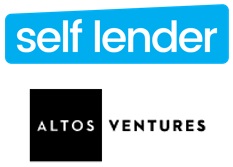Self Lender Helps Customers Build a Credit History

The US FinTech Self Lender announces a $10 million round table led by Altos Ventures. This company provides customers with a way to improve their financial health, helping them build a credit history while also setting money aside.
The Texas-based start-up Self Lender was founded in 2014. This FinTech offers US customers with no or low credit a way to build their credit history while saving money. They claim more than 175,000 customers.
Self Lender lets customers apply for small credit builder loans to be held in a Certificate of Deposit for safe keeping. The applicant pays back via monthly instalments and his payments are reported to the credit bureaus. Once the loan repaid, the CD unlocks with the customer's money.
With Self Lender, US customers are able to establish a credit history and even see their credit score improve (45 points increase on average according to Self Lender’s assessments). This funding round will be contributing to the FinTech’s development as well as to crafting new products and services.
Comments – Savings services to improve credit scores
Self Lender features financial solutions for US consumers with low, poor or no credit history, walking them back on track to regain financial stability. In the US, more than 50 million people may be concerned (source: Center for Financial Innovation). With this service, Self Lender grew fourfold over the past year; they reported $140 million in credit building accounts.
A new generation of players has been emerging, seeking to bet on various savings capacities, and reporting these to credit bureaus to improve their customers’ credit score. Credit Ladder, for instance reports timely rent payments. Yet another example, Pockit allows its users to rely on their savings capacity to increase their credit score. Self Lender, for their part, helps them set money aside (the amount is blocked until the loan is repaid) while improving their borrowing capacity. This solution seems relevant as the customer isn’t actually taking on a loan but rather feeding a savings account.
